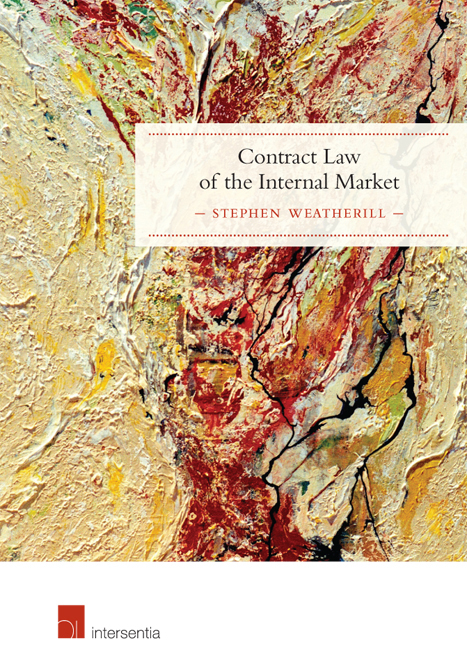Book contents
- Frontmatter
- Preface
- Contents
- Table of Cases: Alphabetical
- Table of Cases: Chronological
- Chapter 1 The Landscape of Contract Law in the EU
- Chapter 2 Contractual Autonomy and National Contract Law in the Internal Market
- Chapter 3 The EU as a Source of Contract Law
- Chapter 4 Themes and Principles in the EU's Contract Law Acquis
- Chapter 5 Improving the Regulatory Environment
- Chapter 6 Models of Harmonisation: Maximum or Minimum
- Chapter 7 Measuring the Effects of the Contract Law of the Internal Market
- Index
Chapter 3 - The EU as a Source of Contract Law
Published online by Cambridge University Press: 19 September 2018
- Frontmatter
- Preface
- Contents
- Table of Cases: Alphabetical
- Table of Cases: Chronological
- Chapter 1 The Landscape of Contract Law in the EU
- Chapter 2 Contractual Autonomy and National Contract Law in the Internal Market
- Chapter 3 The EU as a Source of Contract Law
- Chapter 4 Themes and Principles in the EU's Contract Law Acquis
- Chapter 5 Improving the Regulatory Environment
- Chapter 6 Models of Harmonisation: Maximum or Minimum
- Chapter 7 Measuring the Effects of the Contract Law of the Internal Market
- Index
Summary
SECONDARY LEGISLATION
The previous chapter examined primary EU law as a means to confine the exercise of contractual autonomy. Where it is anti-competitive, where it impedes free movement (of persons and services) or where it involves discrimination on prohibited grounds, EU law prevails. Chapter 2 also considered how national contract law may be subjected to the demands of the internal market. Where it restricts inter-State trade, it is subject to review: where it is not shown to be justified, it must be set aside in so far as it impedes imports.
This chapter moves from primary to secondary law. It concerns regulation of the exercise of contractual autonomy and it largely concerns the scope of EU legislative competence in the field of contract law. Its primary concern is the sturdy raft of Directives that have been adopted as measures of harmonisation with the aim of improving the functioning of the internal market. In this sense it operates at a lower constitutional register than the material considered in the previous chapter. Directives are constitutionally weaker than primary law, in at least two important senses. First, they may be altered ‘from within’, through the EU's internal legislative process, whereas the Treaty and the Charter can be changed only ‘from the outside’, with the unanimous support of the Member States acting through processes for revision foreseen by the Treaty superstructure. Second, Directives are denied horizontal direct effect in proceedings before national courts, whereas this attribute readily attaches to many, though not to all, of the relevant provisions of the Treaty and the Charter. In short, primary law paints a bigger, bolder picture of the EU's commitment to regulating contracts and contract law than does secondary law.
Nevertheless, there are quite simply a lot of relevant Directives, to the point that no appreciation of the shape of contract law in Europe can possibly disregard the layer of material added by the EU secondary legislation, even if a degree of grumpiness about the ad hoc nature of that intervention is commonly visible.
- Type
- Chapter
- Information
- Contract Law of the Internal Market , pp. 51 - 94Publisher: IntersentiaPrint publication year: 2016



